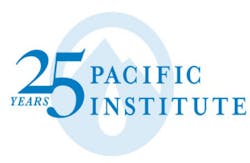OAKLAND, Calif. — The Pacific Institute has released the first comprehensive assessment of California’s water footprint, providing an important perspective on the interconnections between everyday activities and impacts to water resources — both at home and around the world, according to a press release.
The new report, California’s Water Footprint, analyzes the state’s water footprint — that is the amount of water required to produce the food we eat, the clothes we wear, the beverages we drink and the other goods on which we rely.
The water footprint of the average Californian is 1,500 gallons per day, slightly less than the average American but considerably over the average resident in other developed countries or in the rest of the world, stated the release.
[Related content: Report shows future changes in California’s water demand]
California’s total water footprint is an estimated 64 million acre-fee of water. That’s more than double the amount of water that flows down both of the state’s two largest rivers, the Sacramento and San Joaquin, in an average year.
An estimated 38 million acre-feet of water is used to produce goods and services within California. Half of that water is used for goods that are then exported and consumed outside the state.
The remainder — about 19 million acre-feet of water — is used to produce goods that are consumed in California, noted the release.
An additional 44 million acre-feet of water is required to produce the goods and services that are imported into California and consumed here, making California a net importer of virtual water.
“As pressures on water resources intensify, evaluating our impact on the world’s water resources becomes increasingly important; the water footprint is one way to quantify this impact,” said Julian Fulton, lead author of the report. “Most of California’s water footprint is external, meaning that Californians are more dependent on water resources from other places than in-state.”
Read the entire report here.


